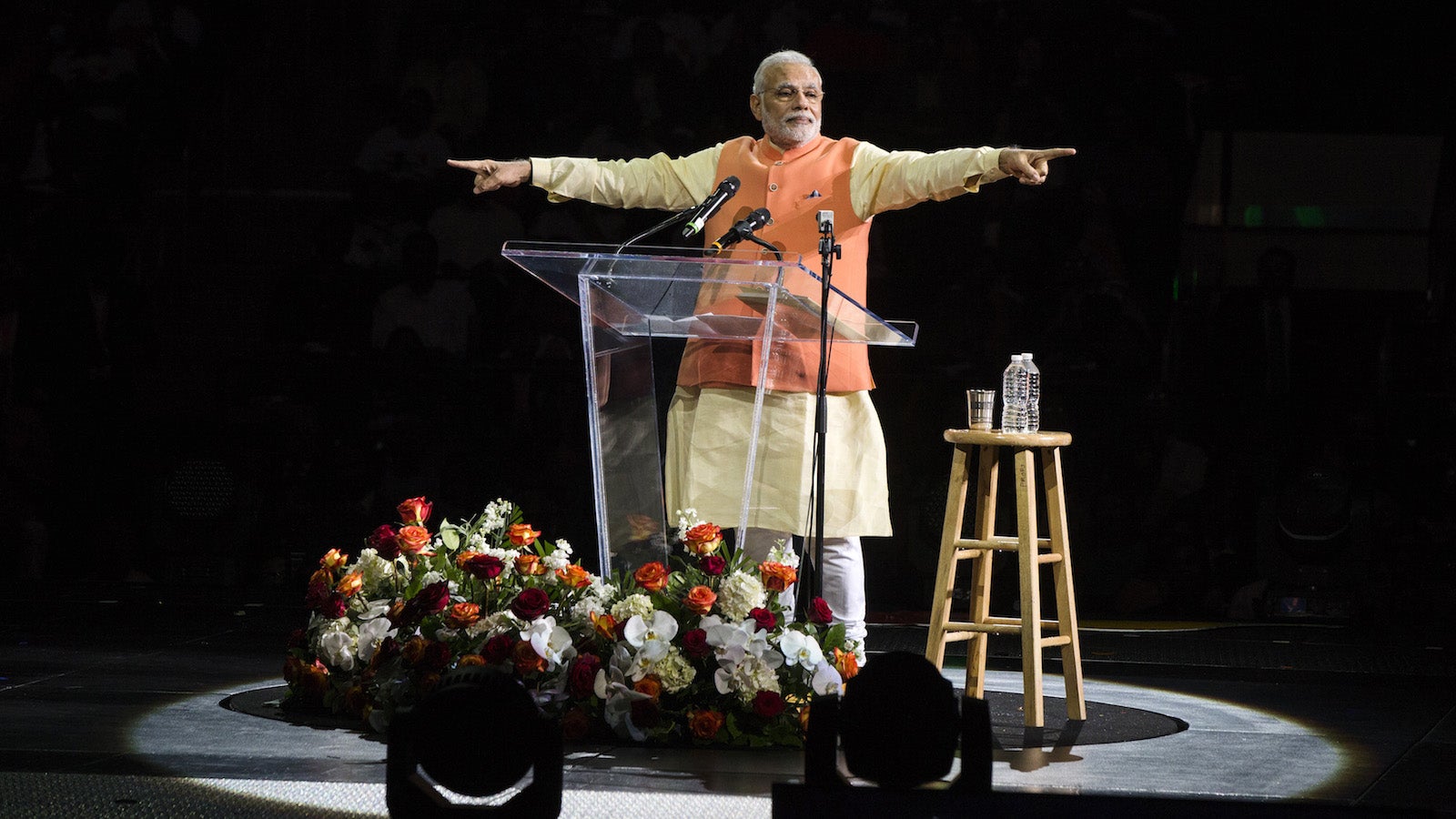India’s Modi will try to repeat his Madison Square Garden magic in China
India’s rock-star prime minister is resuming his world tour.


India’s rock-star prime minister is resuming his world tour.
After enthralling fans at Madison Square Garden in New York and at Sydney’s Allphones Arena in 2014, Narendra Modi and his entourage have scheduled a visit to China, where, this May, he is widely expected to pull off a similar event, addressing a large diaspora of Indians in the country to showcase his stature.
In China, he will be conducting bilateral talks with leaders of Asia’s largest economy.
According to India’s ministry for overseas Indian affairs, there were about 15,000 Indians living in mainland China as of 2012, and another 37,250 in Hong Kong. Various Indian associations already have sent their members invitations to the event next month.
Modi had played to the gallery during his address in the US and Australia. His speeches—delivered in Hindi—mainly focused on his rags-to-riches story, on his hope for harnessing the soft-power diplomacy of Indian expatriates, and on his government’s achievements since coming to power in May of last year.
US president Barack Obama said Modi was greeted like a “Bollywood star” on his visit to the states. The Indian prime minister also is likely to find a warm reception in China. But beyond all the glitz of Shanghai, Modi and his team can expect to encounter some serious tasks.
Disputed borders, increased trade
In China, Modi is expected to rake up the longstanding issue of disputed land boundaries between China and India. During Chinese president Xi Jinping’s visit to India last September, Indian and Chinese troops were engaged in a border standoff after the Chinese army reportedly crossed over to the Indian side. While diplomatic channels immediately swung into action, the confrontation had caused much embarrassment to the Modi regime.
Modi also is expected to discuss trade and the opening up of the Chinese economy to Indian exports of pharmaceuticals, agriculture, and IT products.
Annual trade between China and India, respectively Asia’s largest and third-largest economies, stands at an estimated $65.7 billion, with India facing a deficit of $36.2 billion. Modi’s regime will be looking to bridge that gap.
Not his first time
Modi will be the first Indian prime minister to address a public gathering in the communist country. But he is not new to China. As chief minister of the western state of Gujarat, Modi had visited the country multiple times, and publicly professed his admiration for its citizenry. (And now his administration is planning a new journalism university modeled on Beijing’s state-run Communication University of China.)
“China and its people have a special place in my heart,” Modi said in 2011 at Beijing. “I admire their hard working, disciplined, and resilient nature, and above all, their sense of history. Our cultural bonds are very strong and deep-rooted. Over the years, our relations have further strengthened. We are committed to making them still better, fruitful, and productive.”
Modi’s visit in May will be preceded by a trip to three other countries—France, Germany, and Canada—for which he leaves on April 9.